Havana is often perceived by Westerners as a time capsule—its side streets adorned with brightly painted cars from the 1950’s. The diversity of the architecture—a mash-up of colonialism, baroque facades, and early 1930’s art deco, lends itself easily to an artist’s eye. Few Americans have wandered there freely, until now.
Diplomatic relations between the United States and Cuba were recently restored, and Americans can venture to the small island for a dozen approved purposes, such as professional research, education, and humanitarian work. Yoga is not yet a top draw bringing tourists to the country—studios are nonexistent, more rare than American media, which is still delivered via “El Paquete,” an illegal hard drive—but the practice is alive and well.
Eduardo de Jesus Pimentel Vázquez—more commonly known as Eduardo Pimentel, the “Godfather of Cuban yoga”—has taught over 20,000 practitioners in Havana alone. He teaches daily in various locations, such as a rented veranda of a governmental institution, inside of a theater, at a local martial arts center, or at his own apartment with a maximum capacity of 12 students.
The conditions are minimalist—students rest in Savasana on a small area of tiled floor space, surrounded by empty walls with peeling paint and views of lush, fertile jungle outside. Pimentel dreams of one day selling his apartment for a larger space, so that he can open a yoga studio of his own—which as of today, would be the first of its kind.
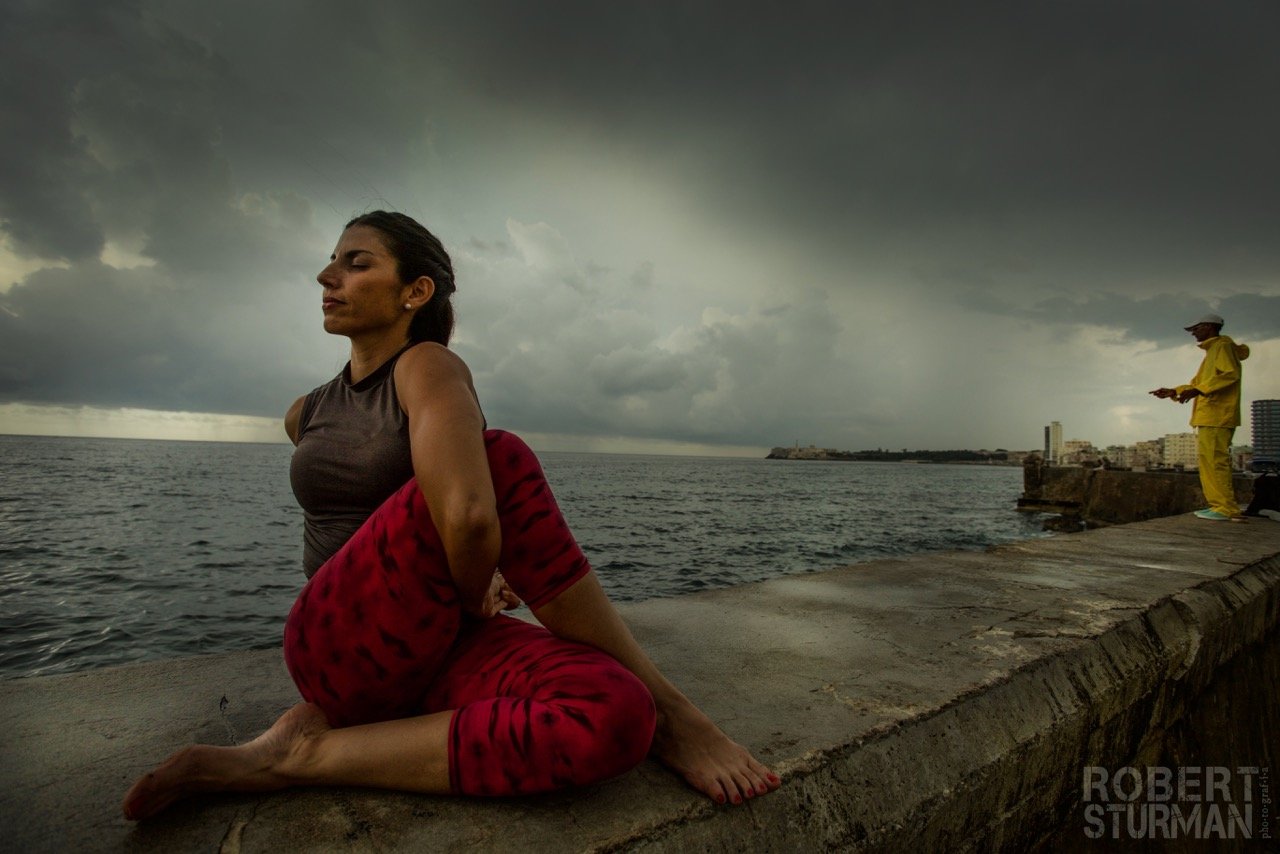
A Cuban woman named Maykel on the Malecon, as she expressed a Half Bound Lord of the Fishes (Baddha Ardha Matseyasana). Photo by: Robert Sturman
Currently there are six nondescript locations in Havana that are rented out for public yoga classes. Few props are available: straps, blocks, even yoga mats are difficult to come by, as slow Cuban commerce continues to limit the importation of many everyday goods. The government still controls two thirds of the country’s economy, so Pimentel relies primarily on donations for the classroom necessities; mats come from students and teachers he’s worked with from the U.S. and Canada.
He has put aside a few unused, waiting to roll them out once he opens his studio. He’s also tried to bring back mats from the U.S. to no avail—it is not possible to import goods into Cuba without a license. Although yoga mat scarcity is a quandary in the city of Havana, Pimentel regularly donates what he can to other teachers in outlying provinces like Sancti Spiritus, Manzanillo, and Camaguey, where obtaining such material goods is impossible. While yoga is not as popular outside of Havana, there is still need within varying provinces—Manzanillo might see an estimated 100 students per week, for instance, while Holguin and others, maybe 50 or less.
Related: Why I Can’t Do Yoga Alone
At nearly 70, Pimentel is a vision of health—an idyllic yogi with silvery tousled hair, a broad smile, and kind eyes. He was born in Havana and is the father of two children—Sarada, 26, and Kristian Eduardo, 19. To this day, he can still recall the date of the inception of his yoga journey: January 28, 1972—his first practice. He read books like Hatha Yoga and Kundalini Yoga by Swami Sivananda, which resonated with him on a profound emotional level.
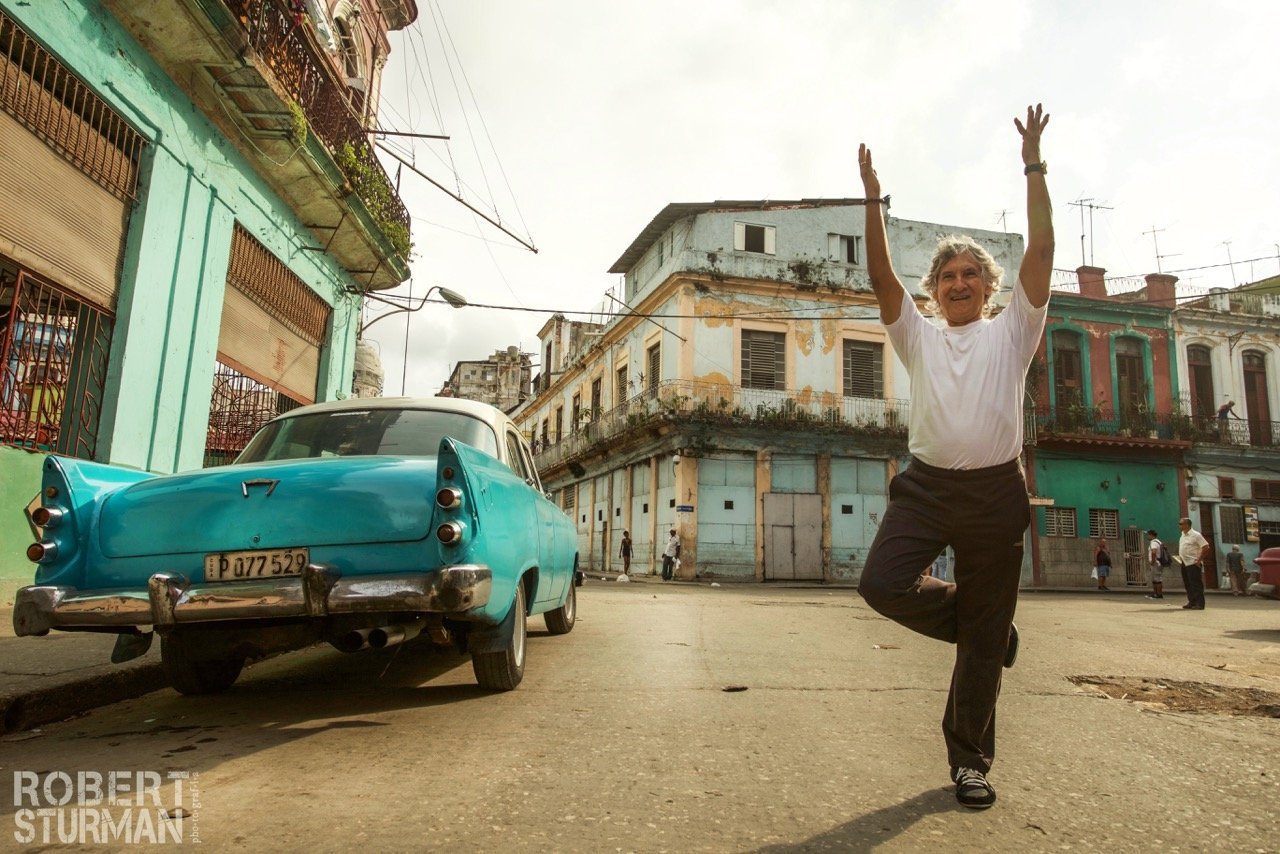
In Tree Pose (Vrksasana), Pimentel’s charm is evident. “While we waited for other Cuban yogis to arrive, I was talking with Eduardo and could not wait to begin creating a portfolio with him,” says photographer Robert Sturman.
In the 80s he came across Light on Yoga by B.K.S. Iyengar, the pinnacle of his evolution that shaped his teaching style. He became a certified yoga teacher in 1992, when he traveled to the Yoga Institute of Miami and trained with Bobbi Goldin. In 1997, he went to Pune, India, and met Iyengar in person at a three-day Vipassana retreat, which spawned a similar retreat in Cuba that he developed. He’s spent 45 days in Nepal and has taught in Boulder, Colorado, at a Yoga Journal conference, and is the author of three books published solely in Cuba.
Pimentel is not a certified Iyengar teacher, but draws from its influence with a heartfelt respect for the principles of implementing hands-on postural corrections. “Cuban students love that the teacher touch him or her,” he says. “You don’t need to ask permission!” Pimentel explained that the extrovert qualities of Cuban culture and character have been adopted into the way they practice and teach yoga. “We mix Spanish and Afro Cuban traditions—I also teach ‘smiling yoga,’” he added.
“The Godfather” spent the latter portion of the 20th century spreading yoga throughout Havana, where a community began to flourish. He taught in Catholic churches and cultural centers, and even received support from the government during an especially restrictive time, when the country lacked basic necessities like transportation, food, and medicine.
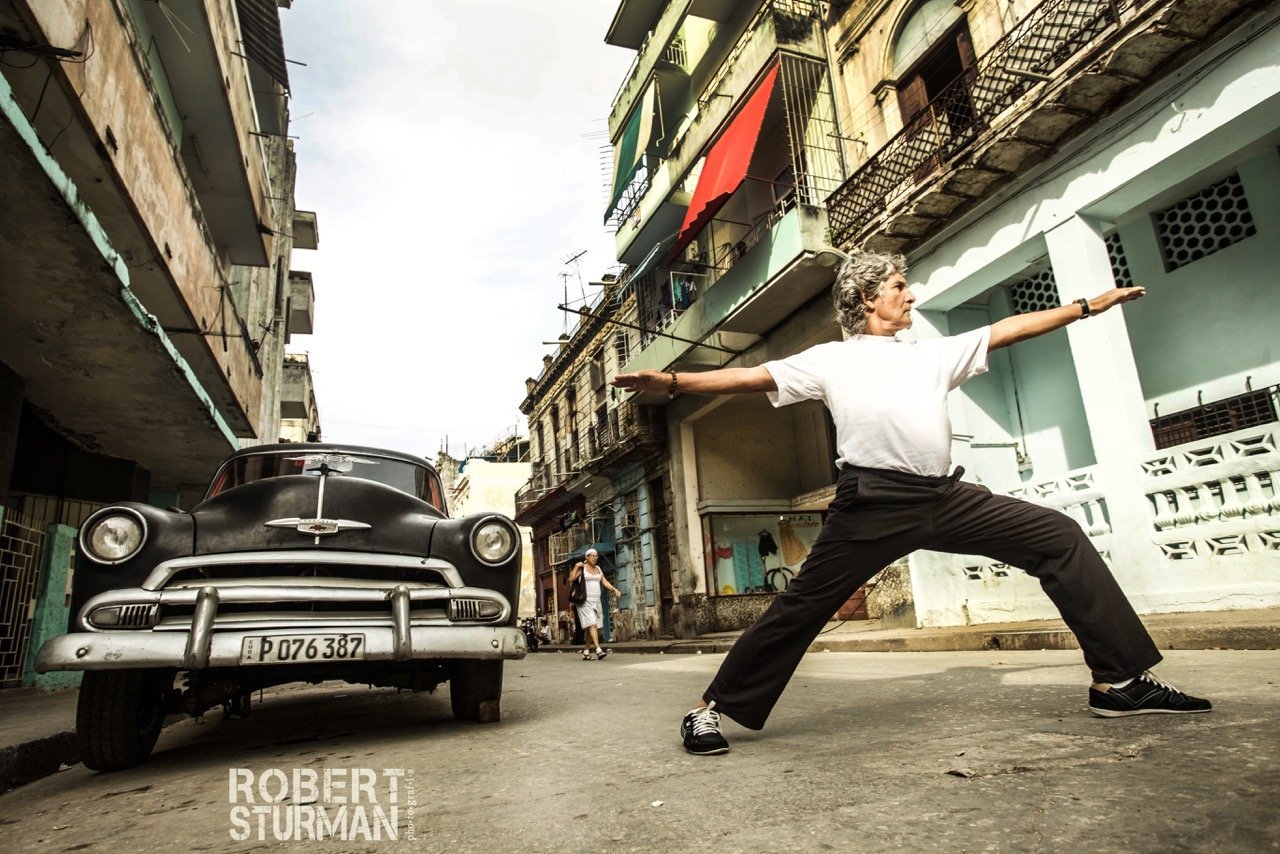
Pimentel’s Warrior II (Virabhadrasana II) depicts the wisdom and nature of his practice. “Havana is a feast for the senses,” Sturman says. “Everywhere I looked there was poetry.” Photo by: Robert Sturman
In 1999, Pimentel partnered with the International Association of Black Yoga Teachers to develop a cultural yoga exchange between Cuba and the United States. He’s also the president and founder of the Cuba Yoga Association, a non-governmental organization with over 15,000 members. The organization managed to win the support of the Castro regime under the auspices of alternative medicine.
Known throughout Cuba as “green medicine,” yoga and other forms of holistic healing were backed by the government to promote good health among citizens. Yoga was often broadcast on governmental television networks, featuring Pimentel in many of the segments.
Pimentel’s progress didn’t come without tension, however, as yoga was viewed by the government as a religion through the late 80s. But as the country shifted after the collapse of the Soviet Union in 1991, Pimentel said that yoga became a very important anti-stress tool for Cubans, which may have helped change government view. “Yoga is important for any society, but is special for us—yoga has been a kindness in difficult times.”
Related: Robert Sturman on the Art and Beauty of Yoga
With sanctions now lifted, Pimentel looks forward to collaborating with more American yogis. In addition to teaching public classes, he also co-leads a Canadian retreat center just outside of Havana on the Playas del Este called MHAI. Prior to current conditions, he taught Canadians and other Cuban students who practiced there on a weekly basis, or Americans who gained permits through the yoga exchange.

Christine Dahdouh, a Canadian and co-founder of MHAI yoga with Pimentel, danced in the streets of Havana in Lord of the Dance Pose (Natarajasana). Photo by: Robert Sturman
It is only a matter of time before the waves of other American yogis and retreats begin washing ashore.
Robert Sturman, a renowned yoga photographer, traveled to Cuba recently with Rina Jakubowicz, a half-Cuban yogi and prominent teacher based in Miami, who met some of her family there for the first time. Their mission behind what Sturman calls, the “Cuba Libre Yoga Project,” is to set a tone of mindfulness for the many yogis who will soon follow. When Sturman announced his travel dates on social media, Pimentel’s colleagues at MHAI, already familiar with his work, reached out to him about collaborating.

Jakubowicz in a Half Lotus Tree Pose variation, portraying the art of asana as it meets the cadence of the street. “I do not always know how to address the suffering of humanity, but I will never turn away from it,” Sturman says. Photo by: Robert Sturman
After some initial hesitation from Pimentel, citing worry over the exploitation of Cubans through photography, Sturman gained his trust. “He wanted to know what I was going to do with the pictures—if I was going to make money and sell them,” Sturman said. But after spending a day together, and realizing how passionate he was about his work, Pimentel thanked him for respecting his concerns. “He’s a really sincere, authentic teacher,” Sturman said, “that’s just what he does—he teaches.”
Pimentel mentioned that some American and even European yoga teachers have traveled to Cuba to preach, rather than collaborate—that there’s a certain sense of entitlement among foreigners. Sturman’s project aims to absolve this—inspiring mindful and respective travel among yogis; to collaborate and share knowledge and ideas, rather than act as missionaries.
As the main subject of Sturman’s portraiture, Jakubowicz immersed herself among the Cuban people, and gained insight about the roots of Cuban yoga from Pimentel. “He wants people to know that no one is bringing yoga to Cuba,” she said, explaining that despite the country’s isolated history, they have not been sheltered from the practice itself. In Pimentel’s eyes, the opportunity for exchange of ideas is available to all who seek it—but a willingness to learn from Cuban teachings is fundamental.
Pimentel remains optimistic and jovial for Cuba’s open future, and humble despite the reputation he’s gained throughout his country and beyond.

As a musician passed by, Jakubowicz embodied Sturman’s vision as the bride who would marry Cuban yoga with the rest of the world. She brought her hands to her heart as an expression of gratitude for this opportunity, in this stunning variation of Camel Pose (Ustrasana). “What an honor to be able to express and share this part of my world and this part of Cuba in this unique and humbling way,” she says. “What a gift.” Photo by: Robert Sturman

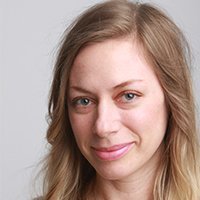


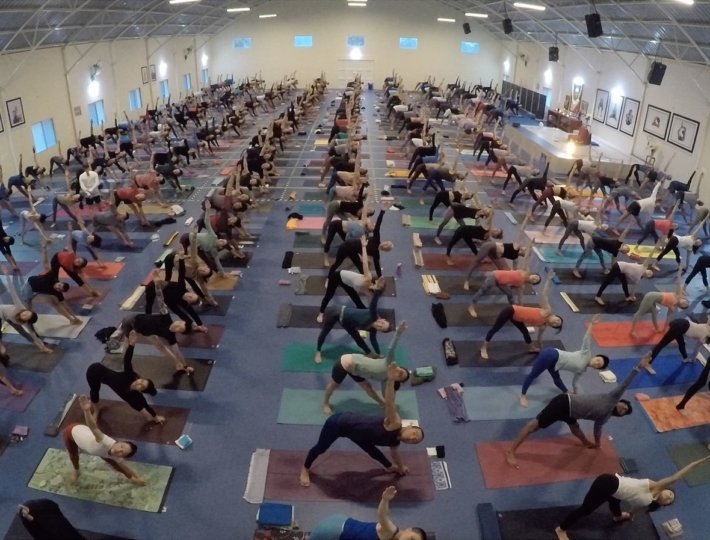



Comments (0)